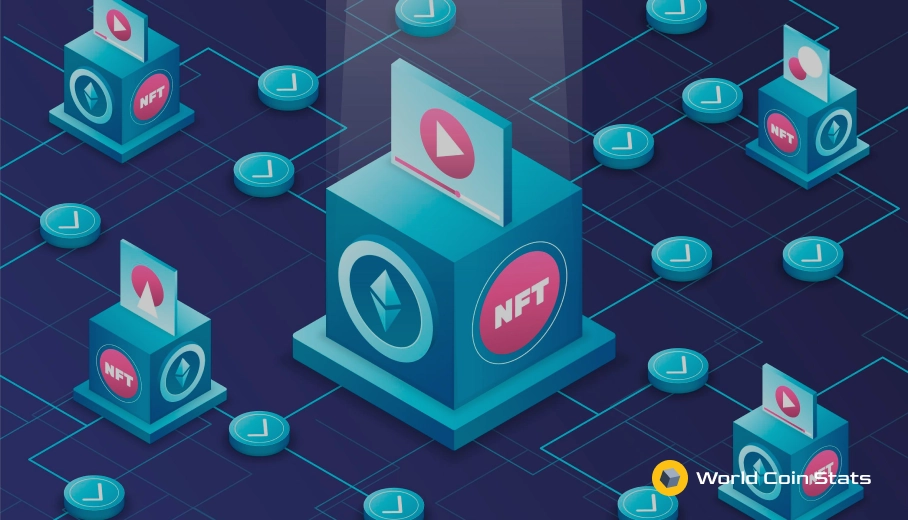DeFi Staking vs Crypto Loans
Decentralized finance (DeFi) is the next big trend in cryptocurrency. As with all new trends, it has a lot of new terminology to learn.
One of those is staking. Crypto loans can also be confusing for users because they operate a little differently than traditional finance loans.
This article will clear up the confusion between DeFi staking and crypto loans. We will also cover how to make investments using both tools.
DeFi Staking Explained
DeFi staking is a little confusing to beginners, but the basics are as follows.
First of all, a proof of stake (PoS) protocol is required for staking to even exist. With that in mind, you must search out coins that utilize a PoS protocol.
Ethereum (ETH), Tezos (XTZ), IOST (IOST), Livepeer (LPT), and many more offer staking.
With that in mind, what exactly is DeFi staking?
Basically, staking involves locking in a certain amount of cryptocurrency to the blockchain. It’s essentially the equivalent of mining on the Bitcoin blockchain. And just like mining, you receive a reward when a block on the blockchain is mined.
However, you don’t need to invest thousands of dollars into a mining rig to stake. You simply have to lock your cryptocurrency to the blockchain and wait for the returns.
What risks are involved with DeFi staking?
Well, there are plenty of risks involved in DeFi staking.
The return percentage stays the same. However, inflation will often eat away your earnings because inflation increases as each block is mined on the blockchain.
This can be especially problematic on coins that have a large amount of inflation. The other risk of staking is that the underlying value of the coin decreases.
Staking has the same risks as blockchain mining, but the overhead is significantly less with staking.
What cryptocurrencies allow staking?
All the cryptocurrencies that rely on a proof of stake (PoS) protocol allow staking. Some examples include Dash, EOS, and Ardor.
However, there are exchanges that allow users to stake cryptocurrency.
What exchanges allow staking cryptocurrency?
There are plenty of non-custodial cryptocurrency exchanges that allow staking of their native cryptocurrency.
For instance, IDEX is a decentralized cryptocurrency exchange with its own token – AURA. If you stake AURA, then you receive a share of the fees that the IDEX exchange generates. IDEX pays out about 50% of the fees it collects to stakers, so it’s certainly a popular option for stakers.
As for the exchange itself, users conduct transactions by signing their own transactions because they have access to their own private keys.
It’s a truly decentralized cryptocurrency exchange.
All the non-custodial cryptocurrency exchanges operate in a similar manner. The only difference between the different exchanges are the fees and available cryptocurrencies. Unfortunately, none of the non-custodial exchanges are compatible with fiat currency at the moment.
Crypto Loans Explained
The biggest hurdle with crypto loans used to be issuing a collateralized loan.
This problem has been solved with Ethereum smart contracts and stablecoins pegged to the US Dollar (or other fiat, but mostly the dollar).
Basically, cryptocurrency loans work by allowing you to loan out DAI – a stablecoin backed by $1.00 of Ethereum for $1.00 of DAI. The borrower must put up collateral of $1.50 of Ethereum per $1.00 of DAI. If the borrower does not pay back the loan, then the collateral is released to the lender due to the smart contract.
If the borrower pays the loan, then the lender will receive the interest.
That specific type of loan occurs on a platform called Maker that exists on Ethereum. In fact, Maker is the most popular crypto loan platform with over 70% of the market share of the crypto loan market.
Other loan platforms exist that have a more traditional structure. Those platforms usually involve a pool of cryptocurrency that gets loaned out. Interest begins accruing immediately after you place your funds into the pool.
What cryptocurrencies have loans?
All the major cryptocurrencies have loans available on the platforms. However, lenders and borrowers tend to avoid loaning out cryptocurrency due to the volatility of the price.
What are the risks involved in loaning cryptocurrency?
Loaning cryptocurrency might appear extremely safe at first glance. However, it does have risks.
The biggest risk is that the value of the underlying cryptocurrency can decrease, which will effectively decrease your return on the interest payments.
It’s similar to inflation eroding the value of a loan, but cryptocurrency is much more volatile than any fiat currency.
There have also been some security concerns involving the smart contracts with cryptocurrency. Those issues have mostly been resolved at this point, though.
Which is better: Staking or Crypto Loans?
Neither staking nor crypto loans are inherently better or worse than each other. All that matters is your investor profile and finding a suitable investor profile for your needs.
Both staking and crypto loans are passive income sources, so that part is equal. However, lending is a little more risky as your coins are locked up in a loan for a certain amount of time until the loan is paid back or the borrower defaults on the loan.
On the other hand, staking tends to be more liquid because you can withdrawal your coins from the protocol at any time. It also helps the protocol function, so if you are interested in helping cryptocurrency it’s a great option.
In terms of risk, crypto loans tend to be marginally more secure because they have guaranteed payments or a guaranteed default if the borrower misses a payment. Staking relies on fees generated by mining, so the income generated tends to fluctuate more frequently.
Both options, however, can lose value if the value of the underlying cryptocurrency decreases due to either inflation or normal supply and demand factors.
Final Words
That covers it for the differences between crypto loans and staking. Both options serve as an excellent place to park your cryptocurrency rather than simply holding it in your wallet generating 0 value.
Why?
You won’t lose the cryptocurrency itself. All you will sometimes lose is some value on your final return.




